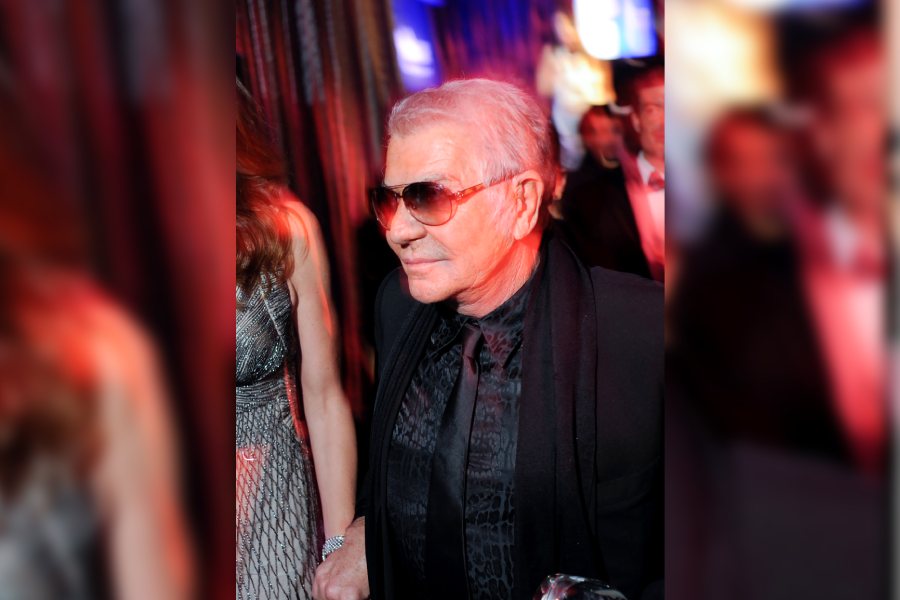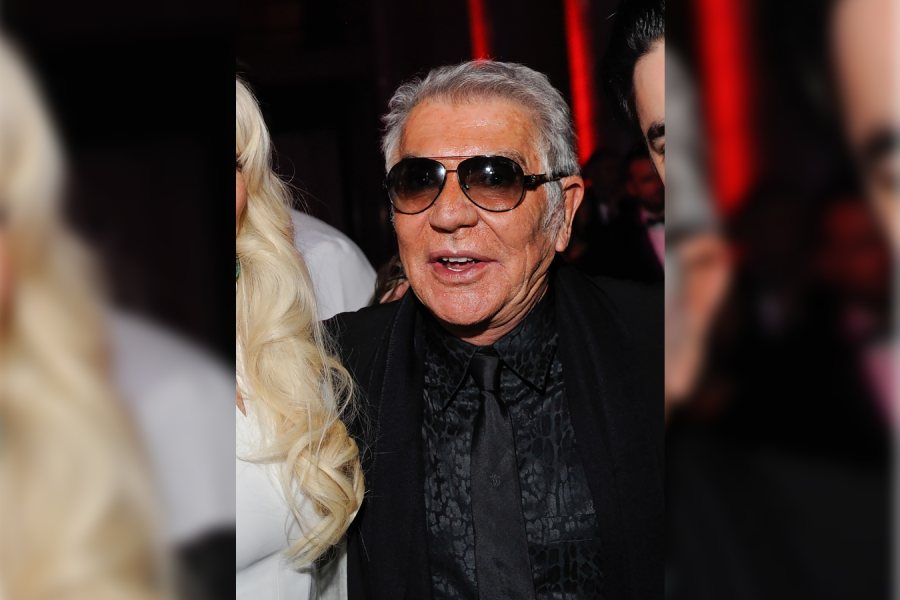Roberto Cavalli, the Italian fashion designer who celebrated glamour and excess, sending models down the runway and actresses onto red carpets wearing leopard-print dresses, bejeweled distressed jeans, satin corsets and other unapologetically flashy clothes, has died. He was 83.
His company announced the death on Instagram but provided no details.
Cavalli’s signature style — “molto sexy, molto animal print and molto, molto Italiano,” as British newspaper The Independent once described it — remained essentially unchanged throughout his long career. But he skillfully reinvented his clothes for different eras, enjoying several renaissances and building a global lifestyle brand in the process.

Casey Kelbaugh/The New York Times
In the 1970s, Cavalli designed jackets, jeans and minidresses made from patchwork denim, selling his upscale hippie frocks in a boutique in St. Tropez, on the French Riviera, to actresses like Brigitte Bardot and Sophia Loren.
For the next two decades, he remained largely unknown outside Europe. Then, in the 1990s, he reinvented luxury denim, first with the sandblasted look and then, in a stroke of invention, by putting Lycra in jeans to make them fit snugger and sexier. When model Naomi Campbell wore a pair during a runway show in 1993, stretch jeans became a huge trend.
Before that breakthrough, Cavalli’s business was foundering, and he had considered closing his factory. But from the mid-’90s onward, he was one of the biggest names in fashion, with stores around the world, celebrity admirers like Lenny Kravitz and Cindy Crawford and licenses for everything from jewelry, perfume and sunglasses to children’s clothes, housewares and a Roberto Cavalli-branded vodka, which came packaged in a snakeskin-covered bottle.
Like (Gianni) Versace or Calvin (Klein), Cavalli achieved single-name status: He stood for an immediately recognizable aesthetic.
“Roberto loved excess, but he never lost his point of view,” Nina Garcia, the editor-in-chief of Elle magazine, said in an email in 2020. “Even when minimalism was the norm, he believed in maximalism. He dressed us thinking that life — and fashion — should be lived at full speed.”
Permanently bronzed and forever puffing on a cigar, Cavalli pursued a lifestyle that was as rock ’n’ roll as his clothes. He piloted his own iridescent purple helicopter, sailed the Mediterranean in a matching purple yacht and lived with his family in an ancient, rambling farmhouse outside Florence, Italy, where he maintained a menagerie of parrots, dogs, Persian cats and a pet monkey. He met Eva Duringer, who would become his second wife and his business partner, when he was a judge at the 1977 Miss Universe pageant and she was Miss Austria.
But while Cavalli was a clever marketer who created an aura of luxury around his brand and his persona, he was also a master craftsperson who invented new ways to print, dye and manipulate fabrics. And he mixed materials, color, patterns and prints with an enviable flair.
As he told Women’s Wear Daily in 2013, “I want to get across that behind the fabulous yacht, the Champagne, the parties, there’s a man called Roberto Cavalli, who worked very, very hard to create this wonderful life.”
Roberto Cavalli was born Nov. 15, 1940, in a suburb of Florence, to Giorgio and Marcella (Rossi) Cavalli. His father was a surveyor for a mining company, his mother a seamstress who managed the home.
His early life was marked by tragedy: In 1944, in retaliation for an attack by Italian resistance soldiers, the German army rounded up a group of local men, including Giorgio Cavalli, and shot and killed them.
Roberto Cavalli developed a stutter from the shock of his father’s death and became a rebellious teenager. He didn’t find his purpose until he attended the Istituto d’Arte, an art school in Florence, beginning in 1957. (His grandfather, Giuseppe Rossi, had been a well-regarded painter.)
Through his training, Cavalli learned how to print designs on T-shirts and sweaters, and throughout the 1960s he sold to clients like Hermès. In 1970, he invented and patented a technique to print on lightweight leather and suede; that same year, he decided to show his first collection (including leather evening gowns and bathing suits) at the annual Salon du Prêt-à-Porter in Paris.
“People like it, but nobody buys,” Cavalli told Vanity Fair. “Because it was too new, too unusual.”
He had more success with denim. He bought a cargo container of old jeans from an American prison, washed them, and cut and sewed them back together with leather pieces to create a patchwork. His ornamented, handcrafted, bohemian-chic clothes were perfectly in tune with the rich hippie aesthetic of the early 1970s, when rock musicians wore Nudie suits and East West Leather jackets and their fans embroidered their bluejeans.
Cavalli’s baroque clothes fell out of favor during the 1980s, when designers like Calvin Klein and Rei Kawakubo sparked a trend toward minimalism. He spent the decade in fashion no-man’s land, and he seemed to hold a grudge toward simplicity itself.
“I like fashion that is different — minimalism is boring,” he told an audience in a talk at the University of Oxford in 2013. “I am a mountain in the minimalism.”
As the 2000s dawned and fashion went global, Cavalli was back on top. He opened his first U.S. store in 1999, and by 2010 his fashion house was operating 60 boutiques across the world. Stylists competed to get their hands on his designs for their celebrity clients, while Carrie Bradshaw, the fictional hero of “Sex and the City,” dressed in giraffe-spot Cavalli dresses and peony-pattern jeans. His wild clothes and “la dolce vita” image seemed to represent the energy and excitement of the new millennium, with its tabloid socialites, Real Housewives, multiplying awards shows and easy global travel.
As Garcia said, “He defined the era of unrepentant maximalism.”
Information on his survivors was not immediately available.
The New York Times News Service











